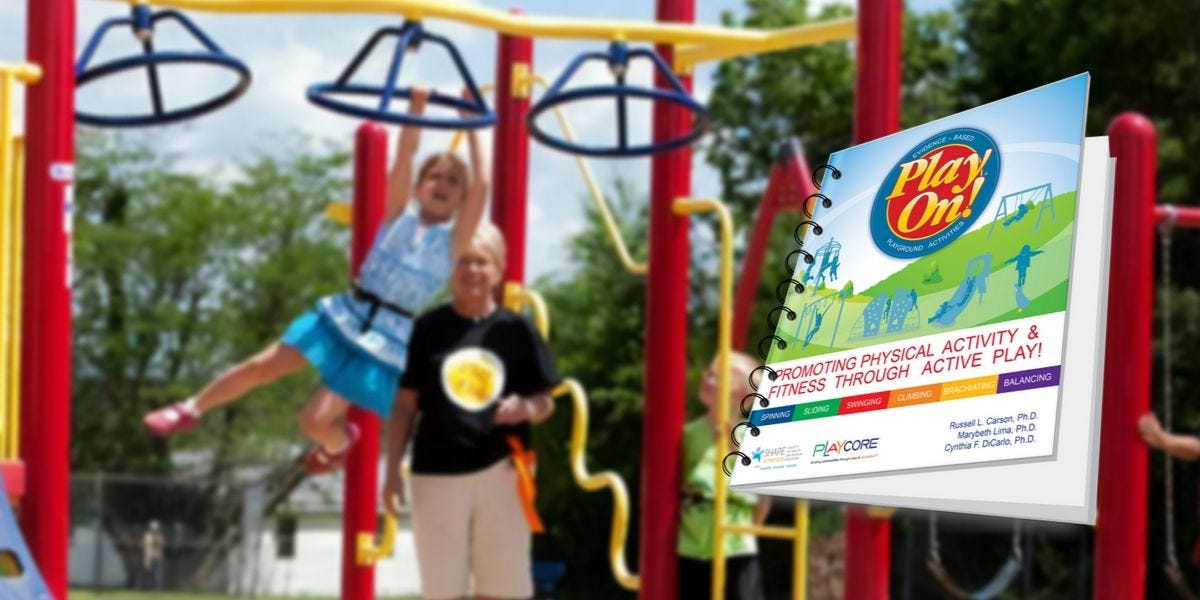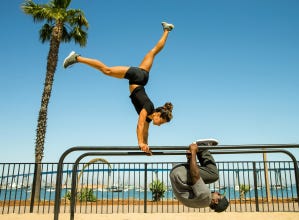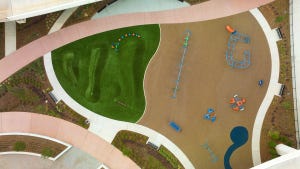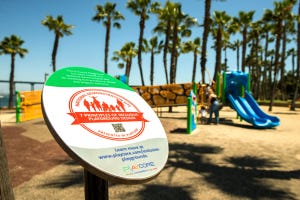Brachiating
This is part of a series of posts on the importance of school playgrounds. Learn more and request a copy of Play On! - the standards-based curriculum and design guide for school playgrounds that promotes physical activity.
Brachiating, also known as overhead climbing, is a favorite activity on playgrounds. This experience is one of the very few activities that is first introduced to children in a playground environment. According to Dr. Joe Frost, widely accepted as the leading contemporary play advocate, brachiating play stimulates both the mind and the body. During overhead climbing play, nerves and muscles are developed and brain circuits and cells are formed as children develop coordination, agility, strength, confidence and motor skills such as depth and distance judgment. It’s also an element of play that is too often overlooked, as evidenced by studies that show a large population of elementary school students who lack an appropriate degree of upper body strength. According to Frost, most children who develop brachiating skills achieve sufficient grip and upper body strength to support their body weight. There are four stages in the overhead climbing developmental progression:
- Fundamental beginning: children gain upper body and grip strength by simply hanging and supporting their own body weight
- Practice: children begin to attempt to traverse the overhead ladder and develop coordination
- Refining: children, usually 4 to 6 years of age, move rhythmically and demonstrate more control with a leading hand
- Mastery: children, usually ages 6 to 9, move quite efficiently demonstrating various ways of travel through hand over hand motion
You may not recognize the word brachiating, but you already know what it is.
Overhead, But Not Over Their Heads
Sure, there is a lot of science and research associated with brachiating play, but the technical details are not what children care about. For children, the point is to create a fun experience they want to repeat with their peers. To do that, schools can intentionally design playgrounds for active play and incorporate activities found in Play On! - the standards-based curriculum developed by SHAPE America in partnership with PlayCore. With 125 playground activities for children in Pre-K through 5th grade, including many that incorporate overhead climbers for brachiating play, Play On! makes fitness fun for students.

Teachers, coaches, programmers, and parents can incorporate these activities into PE class, recess, daily energizers, before/after school programs, camps, and even special events.
From Playground to Classroom
Brachiating play is not only linked to improving overall health, fitness, and physical development, it also offers social-emotional benefits and supports skills that can lead to improved academic performance.
Brachiating stimulates both sides of the brain for greater integration and learning. As children engage in overhead climbing activities, they improve their hand-eye coordination- essential for fine motor skills and handwriting. As children accomplish various challenge levels and refine their skills, they build confidence and self-esteem. Linkages encourage organized games and more frequent usage between friends. Additionally, brachiating encourages communication and advanced cognitive skill development, such as creative problem-solving.
Next Steps
What most people think of as swinging on “monkey bars” clearly plays an essential role in childhood development, and in supporting the health and wellness of students. If you want to learn more about brachiating, request a copy of Play On! for your school, or contact a GameTime school play expert in your neighborhood.
- Trails (27)
- Schools (180)
- Press Releases (102)
- Playground Funding (3)
- Play Science & Research (62)
- Parks & Recreation (339)
- Outdoor Fitness (138)
- National Demonstration Site (32)
- Landscape Architects (72)
- Inclusive Play (101)
- Daycare and Early Learning (62)
- Custom Play (37)
- College Campus (27)
- Churches (50)
- Challenge Course (30)
- Featured Projects (72)
- Site and Shade (6)





